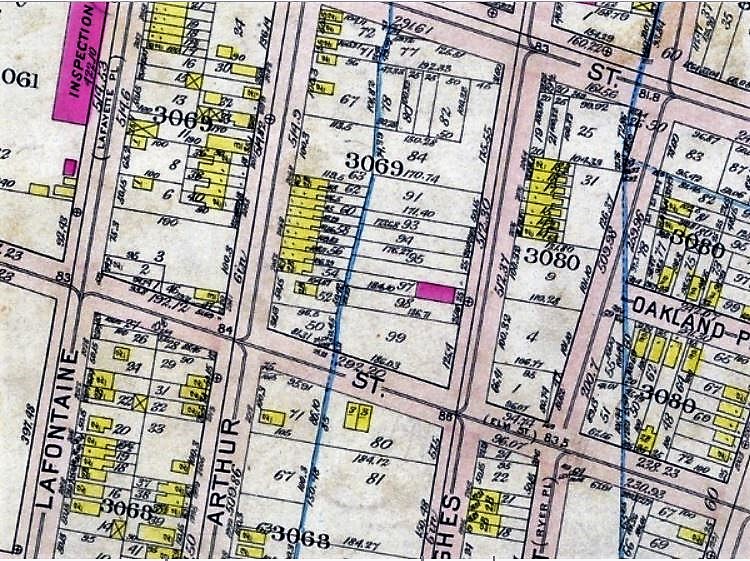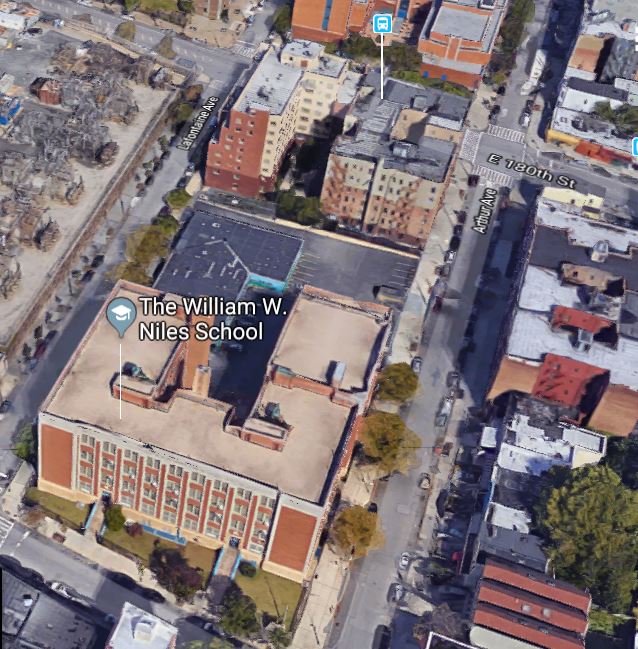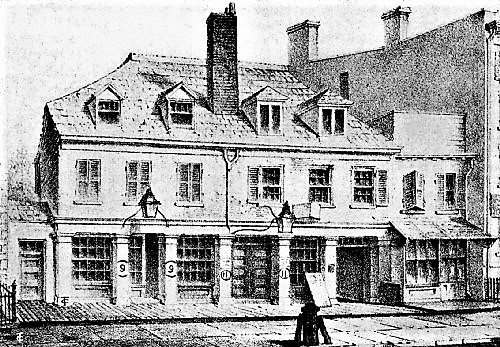
Children ride in a donkey cart at the intersection of Sedgwick Avenue and West Burnside Avenue in the University Heights section of the Bronx in 1897. Could this be Pat the donkey and the O’Connell children from Arthur Avenue on a Sunday drive?
In the early nineteenth century, a famous Irish political leader named Daniel O’Connell of Cahersiveen, County Kerry, had a donkey that he called Valiante. An old wives’ tale suggested that if a child had the measles, whooping cough, or any other childhood ailment, he or she could be cured by passing under and over O’Connell’s donkey three times.
I don’t know if Michael O’Connell was related to Daniel, or if he knew about Valiante when he decided to buy his own donkey upon arriving in New York City from Ireland in 1851. What I do know from old news articles is that the 25-year-old man was very poor when he left the Old Country, and the donkey was the only animal he had to pull and haul products for his small contracting business in the Belmont section of the Bronx. Michael named his donkey Pat in honor of a favorite uncle who had died in County Mayo.
Over the years, Michael’s business prospered and he became a wealthy contractor. He moved his family to a large frame house at 2075 Arthur Avenue between East 179th and 180th Streets, where Pat had a large pasture, a stable, and a stablehand to care for him.

This large farmhouse at 2076 Bryant Avenue in the West Farms section of the Bronx (just south of the Bronx Zoo) gives you an idea of what the O’Connell’s home on Arthur Avenue may have looked like in the early 1900s. This house was demolished sometime between 1911 and 1924. New York Public Library Digital Collections
Over the years, the O’Connell children and their donkey became familiar sights throughout the Belmont section of the Bronx. Pat, described as “the best natured and kindest-hearted old beast you ever knew,” would let the children pull on his tail, paint his hoofs, adorn his neck with daisies, and ride on his back.

Even in 1904, when this map was drawn, Arthur Avenue between 179th and 180th Streets was still fairly rural, with mostly frame houses, several barns (denoted by the X), and numerous vacant lots waiting to be developed. Today, there are still some old frame structures and vacant lots on the avenue.
The only day that Pat was not allowed to play with the children in the Bronx was March 17, which was the one day of the year that Pat was reserved for Michael. For 25 years on that day, Pat would pull his master in a small cart bedecked with green flags along the line of march in New York City’s St. Patrick’s Day parade.

Today, the parking lot for the William W. Niles School occupies the land where Pat the donkey grazed in the O’Connell’s pasture. The $1 million school opened in 1939 as an elementary school (PS 118) for 1,678 children.
Pat the Donkey’s Final Days
On Sunday, July 30, 1911, an unidentified urchin hurled a rock at Pat, which struck the donkey square in the right eye. Michael summoned several veterinarians, who all told him that Pat was too old to survive the ordeal. Michael called the Tremont Police Station, who sent Policeman Christopher Schwartz to dispatch the poor donkey with a bullet. (The New York Herald noted that the officer did not shed a tear while killing Pat. The newspaper said this was probably because he was a German policeman.)

The children planned a proper burial for Pat the donkey.
That night the neighborhood children began planning for an elaborate funeral for Pat, which would include flowers and a gravestone. I’m not sure where the donkey was laid to rest — perhaps in the back yard, which would now be under the school parking lot.
St. Patrick’s Day in New York City
The first recorded celebration of the Anniversary Feast of St. Patrick in New York City took place on March 17, 1762, at the home and tavern of Irish Protestant John Marshall. The tavern, which Marshall called Mount Pleasant, was located near the northeast junction of what are now Greenwich and Warren Streets.
Formerly the old Church Farm, the land on which Mount Pleasant occupied was originally known as the Old Bowling Green garden and tavern, which was bounded by present-day Greenwich, Chambers, Warren, and West Broadway. The original house/tavern was occupied by John Miller, but this structure burned down in 1738 and was completely rebuilt.

The first St. Patrick’s Day celebration took place at John Marshall’s house on the corner of Greenwich and Warren Streets. This watercolor by Anne Marguerite Hyde de Neuville depicts this intersection about 40 years later, in 1809.
The celebration was not a parade, but rather a gathering of Irish ex-patriots and Irish military members serving with the British army who reportedly marched to Marshall’s home. The New York Mercury advertised the event as follows: “The Anniversary Feast of St. Patrick is to be celebrated on Wednesday the 17th Instant, at the house of Mr. John Marshall, at Mount Pleasant, near the College [the King’s College]; Gentlemen that please to attend will meet with the best Usage.”
The first recorded parade took place in 1766. According to the Mercury, the “Day of St. Patrick, tutelar Saint of Ireland, was ushered in at the dawn, with fifes and drums, which produced a very agreeable harmony before the doors of many gentlemen of that nation, and others. Many of them assembled and spent a joyous though orderly evening at the house of Mr. Bardin in this city.”
Twenty toasts to health were made at this gathering, including toasts to the King, the Sons of Liberty in America, the Protestant interest, and American manufacturers.

In 1766, St. Patrick’s Day was celebrated at Edward Bardin’s house, which was located on Broadway near today’s City Hall Park. Four years later, Bardin took over Sarah Steele’s tavern, the King’s Arms, which stood on Broadway opposite the Bowling Green (shown here).
The celebrations ceased during the Revolutionary War, but on March 17, 1784–the first St. Patrick’s Day after the British evacuated New York–the festivities were led by an organization called the Friendly Sons of St. Patrick. The celebration reportedly featured the playing of fifes and drums and a banquet at Cape’s Tavern on Broadway at Wall Street.

Early parades ended at the original St. Patrick’s Cathedral on the corner of Mott and Prince Streets (The Basilica of St. Patrick’s Old Cathedral). This church was built between 1809 and 1815, and was designed by Joseph-François Mangin. It is still standing and in use as a parish church today.
In the early 1800s, the St. Patrick’s Day parade consisted of processions marching from parish churches throughout the city to the original St. Patrick’s Cathedral near Prince Street between Mott and Mulberry Streets.
Today’s parade along Fifth Avenue begins at 44th Street, passes St. Patrick’s Cathedral on 50th Street, and finishes at the American Irish Historical Society at East 80th Street. There are no longer any donkey carts in the parade.



Fun post and so interesting! A great twist to tell the story of an Irish immigrant’s life through his animal…A bit of a toast to old Pat, then, what gave his all to help a family realize the American dream. Also so interested to hear the early history of St. Patrick’s day in old NY, didn’t realize they were celebrating it already in pre-Rev War times.
This puts a whole different spin on what was obviously viewed as a pseudo religious day. I’m not sure that our ancestors would approve of the green beer, commercialism, and drunken debauchery of their descendants St. Patrick’s Day celebrations.
Thank you for all the historical information included with your stories. It is so important that we recognize that all this pavement and development is relatively new. Towns did not spring up in full form from the countryside.